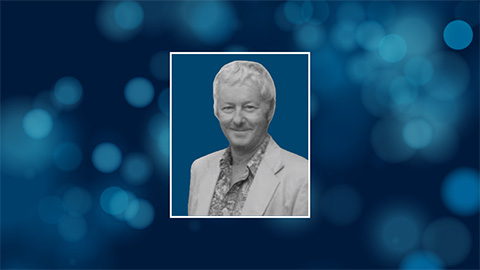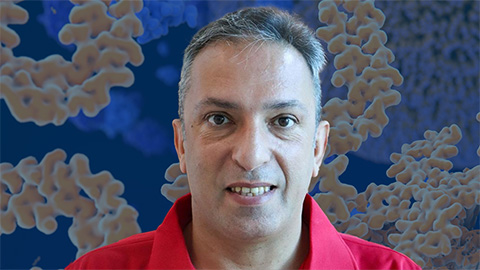AAAS fellows announced
Of the 489 members of the American Association for the Advancement of Science elected as fellows this year, 33 are members of the American Society for Biochemistry and Molecular Biology.
The tradition of electing AAAS fellows began in 1874. Since then, the recognition has gone to thousands of distinguished scientists. Two 2020 Nobel laureates, Jennifer Doudna and Charles Rice, are both AAAS fellows and ASBMB members.
The AAAS will hold a virtual induction ceremony for the newly elected fellows on Feb. 13. The honorees will receive certificates and rosette pins in gold and blue, colors symbolizing science and engineering, by mail.
The ASBMB members who are 2020 AAAS fellows are listed below by section.
Section on Biological Sciences
Suresh K. Alahari Louisiana State University Health Sciences Center School of Medicine: For distinguished contributions in cancer research and teaching, with a focus on signal transduction.
Diana M. Downs University of Georgia: For distinguished contributions to the field of bacterial metabolism and physiology, particularly metabolic pathway integration, stress.
Gloria Cruz Ferreira University of South Florida: For distinguished contributions to the field of iron-heme metabolism, particularly using enzymology and spectroscopy to study heme synthesis and the molecular basis of heme-related disorders.
Michael William Gray Dalhousie University (Canada): For distinguished contributions to the field of molecular evolution, particularly in the area of endosymbiosis, organelle origins, molecular biology and genomics.
Ursula Jakob University of Michigan: For seminal discoveries of how reactive oxygen species play pivotal roles in a range of biological processes and for method development to identify redox-regulated proteins/pathways.
Patricia Kiley University of Wisconsin - Madison: For distinguished contributions to understanding mechanisms that regulate E.coli's lifestyle in different oxygen environments, specifically how transcription factors exploit Fe-S metal centers for oxygen responses.
Samuel J. Landry Tulane University School of Medicine: For distinguished contributions to the field of structural and molecular immunology, particularly for the analysis of protein immunogenicity and CD4+ T-cell epitope prediction.
Rodney L. Levine National Heart, Lung, and Blood Institute /NIH: For distinguished contributions to our understanding of the effects of oxidative modifications of proteins.
Beronda L. Montgomery Michigan State University: For distinguished contributions to plant biology and microbiology, particularly using photobiological analyses to investigate physiological and morphogenic adaptation of photosynthetic organisms.
Katsuhiko (Katsu) Murakami Penn State: For outstanding contributions in the field of structural biology, particularly the role of RNA polymerase in prokaryotic gene regulation.
Rama Natarajan City of Hope National Medical Center: For distinguished contributions to the field of diabetes and its vascular complications, particularly for studies showing the roles of epigenetics and non-coding RNAs.
Basil Nikolau Iowa State University: For distinguished contributions to the field of biochemistry, particularly for the characterization of novel metabolic processes.
Franklin Wayne Outten University of South Carolina: For distinguished research contributions deciphering the mechanisms for iron sulfur cluster biogenesis, its regulation and its roles in microbial physiology and stress responses.
William S. Reznikoff Marine Biological Laboratory: For deciphering the molecular details of transposition by studying a model bacterial transposon.
Charles Rock St. Jude Children's Research Hospital: For cutting edge research on bacterial lipid metabolism, the results of which have advanced the promise of fatty acid synthesis inhibitors as new bacterial antibiotics.
James V. Staros University of Massachusetts Amherst: For distinguished contributions in cell biology on the mechanisms by which binding of polypeptide hormones to their surface receptors are transduced into signals.
Vassie Ware Lehigh University: For contributions to understanding ribosomes and for outstanding initiatives in undergraduate science education.
Section on Chemistry
Joan Blanchette Broderick Montana State University: For distinguished contributions to the field of bioinorganic chemistry, particularly for elucidating the novel chemistry of iron-sulfur clusters in biological radical initiation.
Phillip E. Klebba Kansas State University: For distinguished contributions to the understanding of the membrane transport mechanisms of bacteria relevant to their practical applications in human and health.
Raymond C. Stevens University of Southern California: For the development of technologies to significantly accelerate protein structure determination and drug discovery, including GPCRs, that have led to new biological insights and therapeutics.
Section on Dental and Oral Health Sciences
Renny Theodore Franceschi University of Michigan: For distinguished contributions to the fields of transcriptional control mechanisms of bone formation, signaling and extracellular matrix biology of osteoblast differentiation, teaching and service.
Section on Medical Sciences
Ronald W. Davis Stanford University: For pioneering work in functional genomics and clinical genomics, and in particular his development of novel technologies.
Catherine Drennan Massachusetts Institute of Technology: For her structures of metalloenzymes and insights that show how nature harnesses and redirects the reactivity of enzyme metallocenters to perform challenging reactions.
Hudson Freeze Sanford Burnham Prebys Medical Discovery Institute: For identifying and characterizing the mechanistic underpinnings of many glycosylation diseases and work towards new treatments.
Thomas H. Haines City College of New York (Retired): For initiating and setting up the CUNY Medical School at City College of New York to educate minority and disadvantaged students.
Shan-Lu Liu The Ohio State University: For distinguished contributions to our understanding of virus-host interaction and viral pathogenesis, as well as impact on scientific communication, diversity, and international collaboration.
Rodger P. McEver Oklahoma Medical Research Foundation: For services to cardiovascular biology and hematology; in particular to understanding the forces that govern cell-cell adhesion, and for distinguished scientific leadership.
Alan Saghatelian Salk Institute for Biological Studies: For mass spectrometry-centered work identifying novel endogenous peptides and lipids in cells, and determining their regulation and targets.
Jerrold Ross Turner Brigham and Women's Hospital/Harvard Medical School: For distinguished contributions to cell biology, physiology, pathobiology, and diagnosis in gastrointestinal science, particularly for defining functions, regulatory mechanisms, and molecular therapies targeting mucosal barriers.
Section on Neuroscience
Alan L. Goldin University of California, Irvine: For distinguished contributions in understanding the function of sodium channels and their role in seizure susceptibility, and for promoting the development of physician-scientists.
Linda Jo Van Eldik University of Kentucky College of Medicine: For distinguished contributions on how aberrant glia-neuronal interactions impact neurodegenerative processes, focusing on identification of signal transduction pathways that mediate neuroinflammatory responses of activated glia.
Section on Pharmaceutical Sciences
Patricia Babbitt University of California, San Francisco: For distinguished contributions to the field of computational biology and bioinformatics particularly related to protein structure/function and applications to drug target identification and drug design.
Walter H. Moos University of California, San Francisco: For distinguished contributions to the fields of pharmaceutical sciences and medicinal chemistry targeting human health and disease.
Enjoy reading ASBMB Today?
Become a member to receive the print edition four times a year and the digital edition monthly.
Learn moreGet the latest from ASBMB Today
Enter your email address, and we’ll send you a weekly email with recent articles, interviews and more.
Latest in People
People highlights or most popular articles

Mydy named Purdue assistant professor
Her lab will focus on protein structure and function, enzyme mechanisms and plant natural product biosynthesis, working to characterize and engineer plant natural products for therapeutic and agricultural applications.

In memoriam: Michael J. Chamberlin
He discovered RNA polymerase and was an ASBMB member for nearly 60 years.

Building the blueprint to block HIV
Wesley Sundquist will present his work on the HIV capsid and revolutionary drug, Lenacapavir, at the ASBMB Annual Meeting, March 7–10, in Maryland.

In memoriam: Alan G. Goodridge
He made pioneering discoveries on lipid metabolism and was an ASBMB member since 1971.

Alrubaye wins research and teaching awards
He was honored at the NACTA 2025 conference for the Educator Award and at the U of A State and National Awards reception for the Faculty Gold Medal.

Designing life’s building blocks with AI
Tanja Kortemme, a professor at the University of California, San Francisco, will discuss her research using computational biology to engineer proteins at the 2026 ASBMB Annual Meeting.
